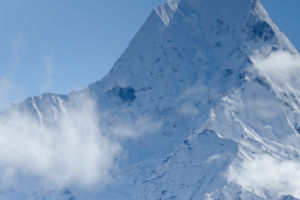The Mauna Kea Observatories, perched atop the dormant volcano Mauna Kea in Hawaii, stands as a testament to human curiosity and the relentless pursuit of understanding the universe.
At an elevation of 13,796 feet (4,205 meters) above sea level, this celestial haven hosts a cluster of world-class observatories, each contributing significantly to our comprehension of the cosmos.
Historical Background:
The story of the Mauna Kea Observatories dates back to the 1960s when astronomers recognized the exceptional astronomical conditions offered by the mountain. Its high altitude, minimal light pollution, and stable atmospheric conditions make it an ideal location for observing the night sky. In 1968, the University of Hawaii established the first observatory on Mauna Kea, marking the beginning of a scientific legacy.
Telescopes and Instruments:
One of the standout features of Mauna Kea Observatories is the array of cutting-edge telescopes and instruments. The Keck Observatory, comprising the twin telescopes Keck and Keck II, boasts the world's largest optical and infrared telescopes. These giants enable astronomers to delve into the depths of the universe, capturing unprecedented images and spectra.
Furthermore, the Subaru Telescope, operated by the National Astronomical Observatory of Japan, is a powerhouse in the world of optical and infrared astronomy. Its advanced instruments facilitate studies ranging from exoplanets to distant galaxies, contributing crucial data to various scientific inquiries.
The James Clerk Maxwell Telescope (JCMT), positioned at a lower altitude on the mountain, specializes in submillimeter astronomy. Equipped with state-of-the-art detectors, JCMT probes the universe in the long-wavelength region, unveiling celestial phenomena otherwise hidden from traditional observatories.
Scientific Achievements:
The Mauna Kea Observatories have played a pivotal role in numerous groundbreaking discoveries. From the observation of distant galaxies and the study of dark matter to the exploration of planetary atmospheres and the hunt for extraterrestrial life, the scientific output of these observatories has been nothing short of extraordinary.
One of the most significant contributions has been in the realm of cosmology. Observations made at Mauna Kea played a crucial role in determining the rate of expansion of the universe, contributing to the understanding of dark energy and the fate of the cosmos.
Challenges and Controversies:
While the Mauna Kea Observatories have been at the forefront of astronomical research, they have not been without their share of controversies. The mountain holds cultural significance for the Native Hawaiian people, leading to protests against the construction of new observatories and concerns about the impact of these facilities on the environment.
To address these concerns, the scientific community has engaged in dialogue with the local community to find a balance between scientific exploration and cultural preservation. Initiatives are underway to minimize the ecological footprint of the observatories and to foster a harmonious coexistence with the native environment.
The Mauna Kea Observatories stand as beacons of human curiosity and scientific progress. With their strategic location, cutting-edge instruments, and a rich history of discovery, these observatories continue to shape our understanding of the universe. As we gaze towards the heavens from the summit of Mauna Kea, we are reminded that the pursuit of knowledge knows no bounds and that, through endeavors like these, we inch closer to unraveling the mysteries of the cosmos.


